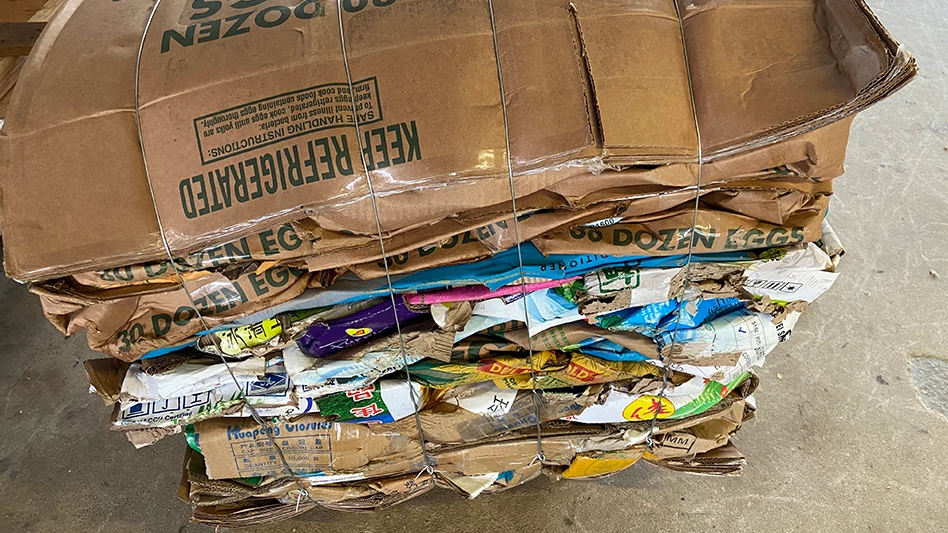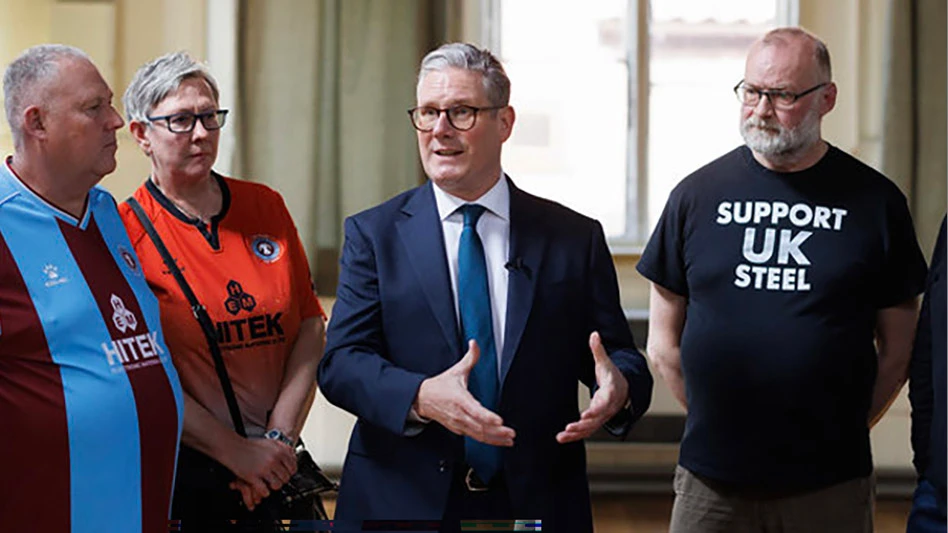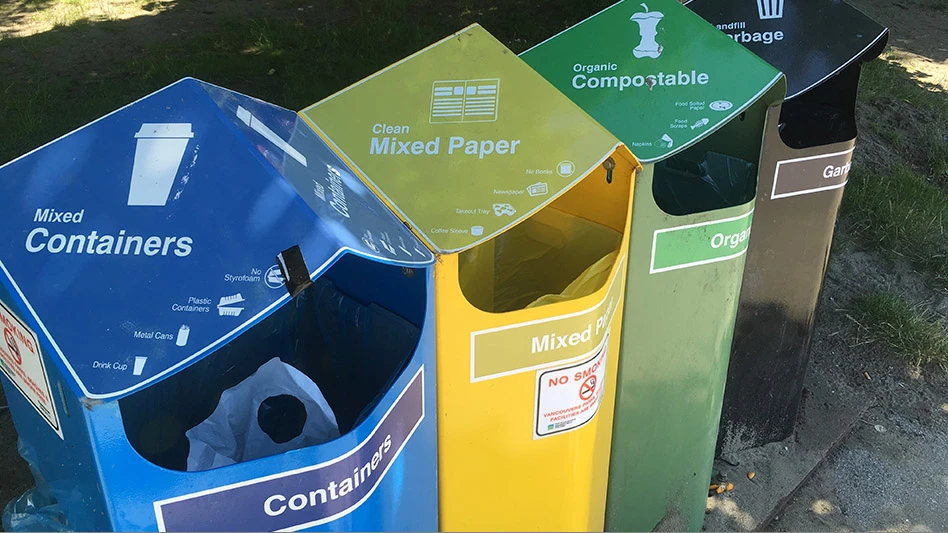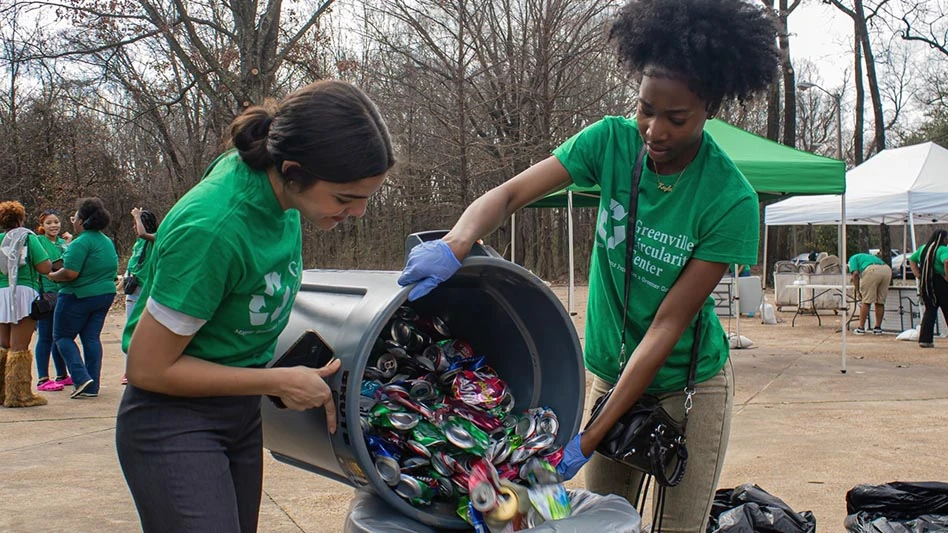 The National Strategy for Electronics Stewardship (www.epa.gov/wastes/conserve/materials/ecycling/taskforce/docs/strategy.pdf), unveiled in July by an interagency task force made up of the General Services Administration (GSA), U.S. Environmental Protection Agency (EPA) and the White House Council on Environmental Quality (CEQ), has drawn support from the Institute of Scrap Recycling Industries Inc. (ISRI) and the Consumer Electronics Association (CEA).
The National Strategy for Electronics Stewardship (www.epa.gov/wastes/conserve/materials/ecycling/taskforce/docs/strategy.pdf), unveiled in July by an interagency task force made up of the General Services Administration (GSA), U.S. Environmental Protection Agency (EPA) and the White House Council on Environmental Quality (CEQ), has drawn support from the Institute of Scrap Recycling Industries Inc. (ISRI) and the Consumer Electronics Association (CEA).
The 32-page document outlining the strategy provides guidance for the sustainable handling of electronic devices. Key areas addressed in the document include increasing the "safe and effective management and handling of used electronics in the United States," reducing the "harm from U.S. exports of e-waste" and improving "safe handling of used electronics in developing countries."
According to the document, "There is a range of tools to help ensure used electronics are recycled in an environmentally sound manner, including accredited third-party certification programs, best practices and increased knowledge and transparency of the companies and practices along the recycling chain. Quality electronics recycling certification programs not only advance best management practices but also offer a way to assess the environmental, worker health and safety and security practices of entities handling used electronics."
Call for Certification
The strategy mentions the two voluntary certification programs for electronics recyclers: R2 (Responsible Recycling Practices) and e-Stewards. At present, it is estimated that 57 U.S. electronics recycling companies have had one or more of their facilities certified, representing nearly 100 different locations.
"However, there is little information available on what happens to used electronics at the end of their useful life (i.e., re-used, recycled or disposed of as e-waste and in what volumes)," according to the document. This type of information would be useful to determine the most effective approaches to collection, recycling and re-use."
The document continues, "There is also opportunity to engage industry, NGOs (nongovernment organizations) and other stakeholders to identify incentives for increasing responsible re-use and recycling by businesses, state, tribal and local governments and the general public. Although there is currently great capacity for managing used electronics in the U.S., there remain many opportunities to build upon these systems and improve the safe and effective handling of these materials throughout the process from collection to recycling."
To achieve this, the strategy calls for launching voluntary partnerships with the electronics industry to increase collection of used electronics for safe management by certified recyclers.
The EPA will seek the commitment of electronics industry companies that use electronics recycler certification programs and those who go above and beyond those practices to increase their use of certified recyclers and provide data in a transparent manner, according to the strategy.
In the short term, according to the strategy, the EPA will work with these companies and other industry stakeholders to launch a voluntary partnership designed to increase the safe management of used electronics through the use of certified recyclers as a floor.
"The EPA will work with the electronic industry and other stakeholders to recognize best management practices for downstream management, encourage public disclosure and promote tracking beyond third-party certification," according to the document.
In the longer-term, this EPA initiative will "strive for continuous improvement of the safe and effective handling of these materials throughout the system from collection to recycling to downstream facilities." The program also will seek to educate consumers on the importance of re-using or recycling used electronics, including methods and locations where recycling and re-use can be accomplished.
The electronic stewardship strategy is intended to provide guidance to electronics recyclers on providing facilities that offer safe and healthy working environments. The document states, "Designing work processes and equipment in a way that eliminates hazards to workers that will help ensure that green jobs in electronics recycling and related industries are safe jobs."
Job Generator
Also mentioned in the strategy is the Department of Labor's (DOL's) recognition of recycling as one of the important industries within the green job sector. The DOL has developed a webpage titled "Green Job Hazards: Waste Management and Recycling" (www.osha.gov/dep/greenjobs/recycling.html) and has published a document titled "Guidance for the Identification and Control of Safety and Health Hazards in Scrap Metal Recycling" (available online at www.osha.gov/Publications/OSHA3348-metal-scrap-recycling.pdf). The DOL encourages electronics recycling and related industries to use the concept of "prevention through design" (www.cdc.gov/niosh/topics/PTD), which asserts that among the best ways to prevent and control occupational injuries, illnesses and fatalities is to "design out" or minimize hazards and risks early in the design process.
Another key part of the strategy is establishing approaches to gather, track and provide public access to information on quantities and movement of used electronics within the U.S.
According to the strategy, "…the absence of a comprehensive tracking and reporting framework for electronic equipment makes the ultimate destination and disposition of this equipment unknown, making it difficult to measure the effectiveness of end-of-use and end-of-life practices. Improving electronics life-cycle tracking systems would provide the opportunity to manage the use and disposition of this equipment more efficiently and to encourage and facilitate environmentally sound use and disposition practices. Working with states, local jurisdictions and other stakeholders that already have tracking and information systems in place will expedite and inform the development of improved tracking systems."
The EPA, in coordination with the DOC, the GSA and other federal agencies, will work to identify methods for domestic tracking of used electronics through a research agenda, according to the strategy. In addition, "EPA, in coordination with DOC, GSA, other federal agencies, universities and other entities, will determine if it can develop and publish an online tool so the public can access information on the quantities and flows of used electronics, and, if so, implement the tool."
 EPA Administrator Lisa Jackson, center, signed a voluntary commitment with Sprint CEO Dan Hesse, left, and Dell Inc. CEO Michael Dell, right, to promote a U.S.-based electronics recycling. EPA Administrator Lisa Jackson, center, signed a voluntary commitment with Sprint CEO Dan Hesse, left, and Dell Inc. CEO Michael Dell, right, to promote a U.S.-based electronics recycling. |
Preventing Harm
The strategy also addresses reducing "harm from U.S. exports of e-waste" and improving "safe handling of used electronics in developing countries."
According to the strategy, a growing stream of electronic scrap generated in the United States is producing unintended effects domestically and abroad. "Used electronics in developing countries, which include exports from the United States and other developed countries, combined with electronics discarded by their own consumers, are causing negative health and environmental effects," according to the strategy document. The document points to a 2005 U.S. industry report that shows recyclers export 74 percent of their used electronics for re-use, refurbishing and recycling. The EPA estimated that the United States generated 2.4 million tons of electronic scrap in 2010, comparable with the 2.3 million tons that China produced that same year, according to a 2010 United Nations Environmental Programme (UNEP) report, making the two countries the largest generators of used electronics.
"As one of the largest consumers of electronics in the world, the U.S. has the responsibility to minimize the negative effects that discarded electronics have on health and the environment, in the U.S. and abroad," the strategy states.
The task force recognizes that global markets play an important role in re-use, remanufacturing and recycling of used electronics, creating environmental. The economic and social benefits of global markets for this material include bridging the digital divide by providing access to information technology products to many people in developing countries who would otherwise be unable to afford them. The proximity to markets where electronics are manufactured and where raw materials are available affects where recycling and other processing of used electronics takes place, as do available technologies, environmental standards and labor rates. For example, the Asian market has high demand for used electronic components for remanufacturing electronics.
The strategy states that the task force has "serious concerns about unsafe handling of used electronics, especially discarded electronics or e-waste, in developing countries that results in harm to human health and environment."
To address this, the strategy calls for federal agency efforts to improve electronics stewardship in the United States, including:
- Improving information on trade flows and the handling of used electronics and sharing data with federal and international agencies, within the limits of federal authorities;
- Providing technical assistance and establishing partnerships with developing countries to better manage used electronics;
- Working with exporters to explore how to incentivize and promote the safe handling of remanufactured, recycled and used electronics at home and abroad;
- Proposing regulatory changes to improve compliance with the existing regulation that governs the export of cathode ray tubes from used computer monitors and televisions that are destined for re-use and recycling; and
- Supporting ratification of the Basel Convention on the Control of Transboundary Movements of Hazardous Wastes and their Disposal.
Robin Wiener, president of ISRI, says the national strategy closely mirrors that trade association's position for stepped up enforcement of the federal CRT (cathode ray tube) Rule to stop illegal exports, increased third-party certifications of responsible recyclers and continued exchange of U.S. technology and best practices to help strengthen the environmentally responsible processing of electronics globally.
"Our federal government is the largest source of used and end-of-life electronics," Weiner says. "It is encouraging to see that the government is taking a strong position on the responsible management of these materials. Even more, we are encouraged by the Obama administration's flat dismissal of burdensome and overreaching legislation that would ban exports and pull the rug out from under an industry that continues to create jobs and contribute to both the U.S. and global economy."
Weiner adds that the strategy "includes practical, effective steps that actually address bad actors instead of shutting down an industry."
The CEA also says it supports the efforts the federal government has laid out in its new national strategy.
The day of the announcement, Walter Alcorn, CEA vice president of environmental affairs and industry sustainability, said, "Electronics recycling is a national problem that deserves a national solution. Today's announcement from EPA, GSA and CEQ echoes the principles our industry laid out this spring with the eCycling Leadership Initiative."
The eCycling Leadership Initiative, launched in April, is an industry led effort to recycle 1 billion pounds of electronics per year by 2016.
"We look forward to continuing our dialogue with EPA, GSA and CEQ in the hopes of fortifying a robust public-private partnership that ensures consumers across our nation have ample opportunities to recycle electronics responsibly," added Alcorn.
The National Strategy for Electronic Stewardship document is available online at www.epa.gov/wastes/conserve/materials/ecycling/taskforce/docs/strategy.pdf.
The author is associate editor of Recycling Today and can be contacted at ksmith@gie.net.
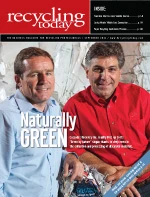
Explore the September 2011 Issue
Check out more from this issue and find your next story to read.
Latest from Recycling Today
- Steel Dynamics nets $217 million on record shipments
- Massive Chinese steelmaking rebound recorded in March
- LME looks into sustainable metal pricing
- OnePlanet Solar Recycling closes $7M seed financing round
- AMCS launches AMCS Platform Spring 2025 update
- Cyclic Materials to build rare earth recycling facility in Mesa, Arizona
- Ecobat’s Seculene product earns recognition for flame-retardant properties
- IWS’ newest MRF is part of its broader strategy to modernize waste management infrastructure
